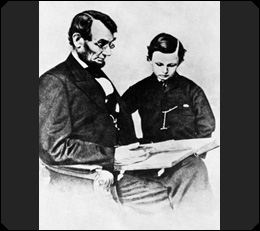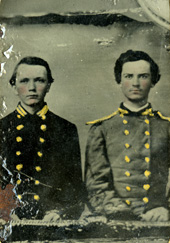Lincoln Letters
About the Exhibit

In celebration of the bicentennial of Lincoln's birth on February 12, 1809, the State Archives of Florida presents an exhibit of documents that refer to Lincoln as a presidential candidate and the leader of the Union during the Civil War. *
The documents consist of letters, diaries, government records, and business correspondence. Each type of record contains one or more references to Lincoln and date from 1860 to 1865.
Among the wide range of subjects found in the documents are politics, banking, battles, prisoner of war camps, family concerns, wartime shortages, religion, and Lincoln's assassination.
In addition to Lincoln, the documents also contain references to many other significant Civil War leaders including Jefferson Davis, Robert E. Lee, Joseph E. Johnston, and Braxton Bragg on the Confederate side and Ulysses S. Grant, William S. Rosecrans, and George McClellan for the Union.
All of the writers have a Florida connection. Some lived in Florida during the war, others fought in Florida Confederate units, and some lived outside of the state but corresponded with relatives in Florida. Most of the writers favored secession and the Confederate government, but some did not: there are no Unionist correspondents, but a few writers had deep reservations about secession and the war.

Given the Confederate sympathies of most of the writers, many of the references to Lincoln are disparaging to him and the North. None of the references are pro-Lincoln, but many statements are neutral towards the Union president.
The purpose of this exhibit is not only to celebrate Lincoln's birth but also to bring to the public's attention a selection of the State Archives of Florida's unique and varied collections that will hopefully encourage further research into Florida and U.S. history.
* Note on Transcriptions: Every effort was made to transcribe the "Lincoln Letters" as they were written, including maintaining the original spelling. In some cases, however, punctuation was added or deleted and paragraph structure altered to facilitate readability. The transcriptions use the following editorial devices to clarify the text: italics signify underlined words and a ___ means a word was unreadable.

 Listen: The Gospel Program
Listen: The Gospel Program